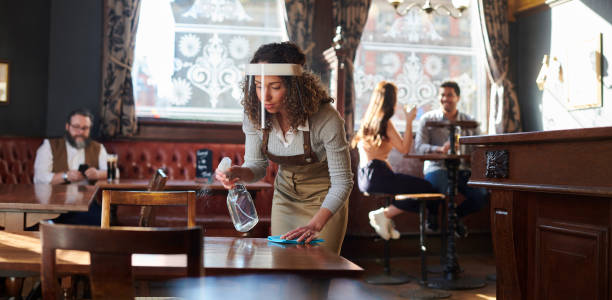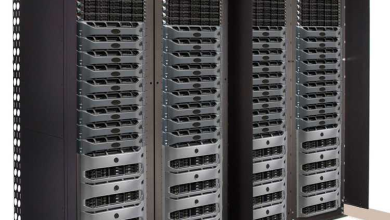
The cleaning and disinfection of food areas such as the kitchens of bars and restaurants are essential to avoid cross-contamination, food poisoning, or waste of food and raw materials.
In addition, all food areas must comply with specific regulations, such as the regulation regarding the cleaning of food areas in bars and restaurants; the Commission Communication on the implementation of food safety management systems.
This regulation: and procedures are based on the HACCP principles, including the facilitation/flexibility regarding its application in certain food companies.
Below we detail the critical areas for cleaning bars and restaurants.
- Kitchen: Without a doubt, the kitchen is one of the areas that gets the dirtiest and, one of those that needs thorough cleaning to guarantee the good condition of the food. Therefore, disinfection must be done thoroughly and constantly.
Specifically, it is usual to clean the floors, countertops, ovens, fryers, and garbage cans daily; food contact surfaces after each use. The same for crockery, cutlery, glassware, pots, pans, and small appliances, such as mixers or slicers. Walls and windows should be squeaky clean.
Range hoods should be thoroughly cleaned every three months. In addition, to guarantee the maximum health of the clients, it is very important that the cleaning tasks do not coincide with the preparation of food.
Critical areas to clean in bars and restaurants?
- Restrooms: Cleaning must be daily and, depending on the number of people, repeat it within the same day. There are four basic elements: the urinals, the sinks (including mirrors, taps, soap dispensers…), doorknobs and latches, and the floor. On a weekly or fortnightly basis, walls, doors and windows will be cleaned.
- Dining room: Every day you have to scrub the floor and each of the tables and chairs in the room. In case of being very dirty, after each service. A more exhaustive cleaning of doors, windows, lights or decorative elements will be carried out monthly or fortnightly. In the case of tables without tablecloths, we must clean them after each use.
- Bar: A fundamental and iconic element in the case of bars, cafeterias and tapas restaurants. It is recommended to clean several times a day to avoid food and drink remains. And complete the process with a quick-drying disinfectant.
- Warehouse: If the warehouse is tidy and clean, it will contribute to better conservation of the products. Clean and organize cold equipment, such as refrigerators or freezers, on a weekly and quarterly basis, respectively.
Common areas
- Corridors and common areas transit areas: They also require daily cleaning.
- Terrace and exteriors: Chairs and tables must be professionally cleaned after each use, and other parts of the furniture weekly. If you have a large outdoor area, you can also consider the option of using a sweeping machine to keep the space clean.
- Textiles: Tablecloths, cloth napkins, uniforms and other textile elements must be cleaned after each use. Although there are many restaurants, hostels and hotels that clean it with their own washing machines, there are also companies that choose to outsource the service. In all cases, it is important to understand the key points in laundry management for companies in the restaurant sector.
These professional cleaning and disinfection plan recommendations apply to restaurants. However, to achieve the highest safety standards for customers and workers, it is a must that we adapt to a cleaning plan to the particularities of each establishment and carried out with the support of companies specialized in professional cleaning.
Read More: Why disinfect and decontaminate?




